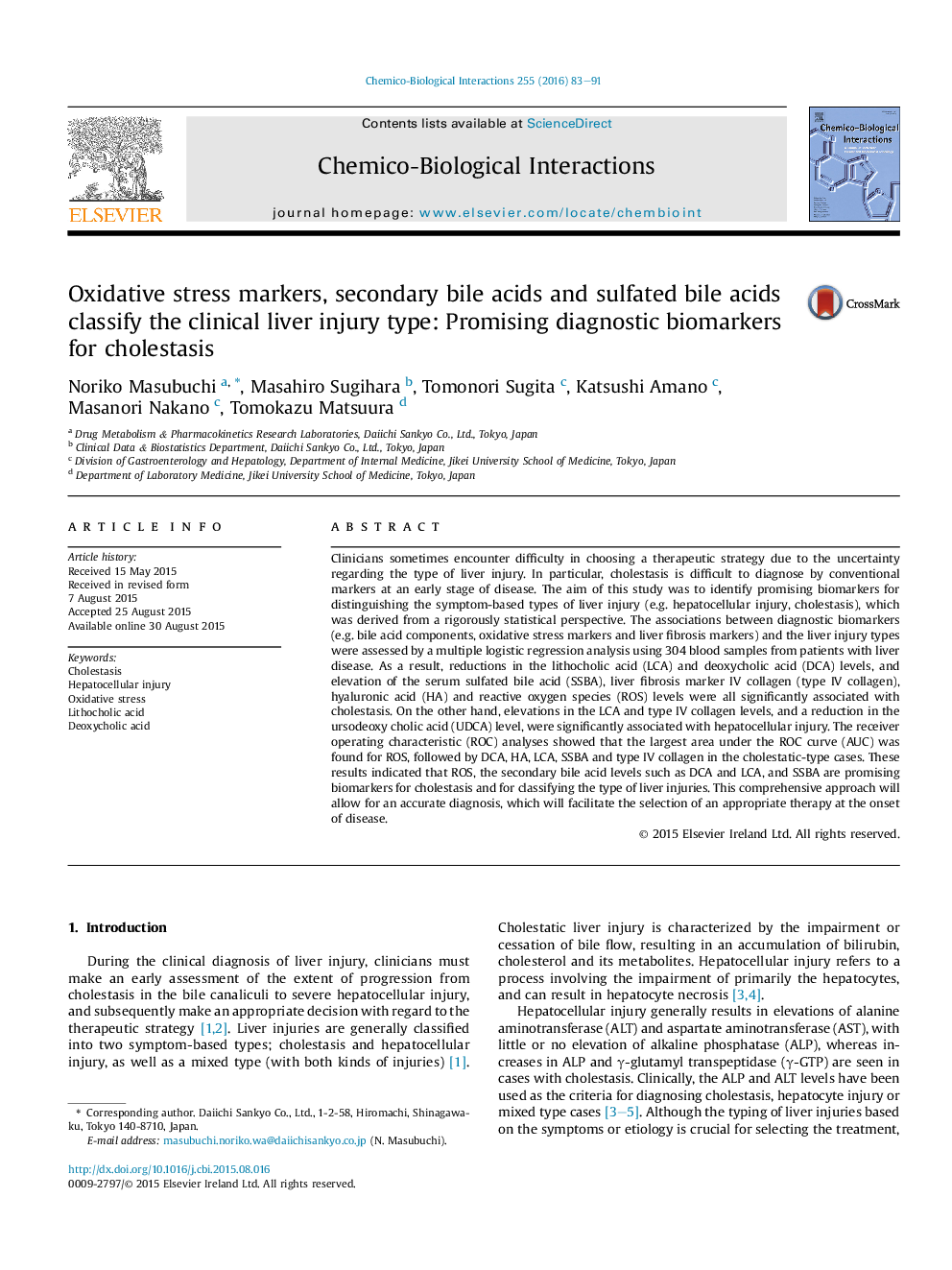| کد مقاله | کد نشریه | سال انتشار | مقاله انگلیسی | نسخه تمام متن |
|---|---|---|---|---|
| 2579917 | 1561586 | 2016 | 9 صفحه PDF | دانلود رایگان |
• Definitive biomarkers were identified for symptom-based types of liver injury.
• The robust statistical analysis was done with 29 markers with patient samples.
• Reactive oxygen species and bile acid components are promising biomarkers.
• This approach will allow for an accurate diagnosis and an appropriate therapy.
Clinicians sometimes encounter difficulty in choosing a therapeutic strategy due to the uncertainty regarding the type of liver injury. In particular, cholestasis is difficult to diagnose by conventional markers at an early stage of disease. The aim of this study was to identify promising biomarkers for distinguishing the symptom-based types of liver injury (e.g. hepatocellular injury, cholestasis), which was derived from a rigorously statistical perspective. The associations between diagnostic biomarkers (e.g. bile acid components, oxidative stress markers and liver fibrosis markers) and the liver injury types were assessed by a multiple logistic regression analysis using 304 blood samples from patients with liver disease. As a result, reductions in the lithocholic acid (LCA) and deoxycholic acid (DCA) levels, and elevation of the serum sulfated bile acid (SSBA), liver fibrosis marker IV collagen (type IV collagen), hyaluronic acid (HA) and reactive oxygen species (ROS) levels were all significantly associated with cholestasis. On the other hand, elevations in the LCA and type IV collagen levels, and a reduction in the ursodeoxy cholic acid (UDCA) level, were significantly associated with hepatocellular injury. The receiver operating characteristic (ROC) analyses showed that the largest area under the ROC curve (AUC) was found for ROS, followed by DCA, HA, LCA, SSBA and type IV collagen in the cholestatic-type cases. These results indicated that ROS, the secondary bile acid levels such as DCA and LCA, and SSBA are promising biomarkers for cholestasis and for classifying the type of liver injuries. This comprehensive approach will allow for an accurate diagnosis, which will facilitate the selection of an appropriate therapy at the onset of disease.
Journal: Chemico-Biological Interactions - Volume 255, 5 August 2016, Pages 83–91
